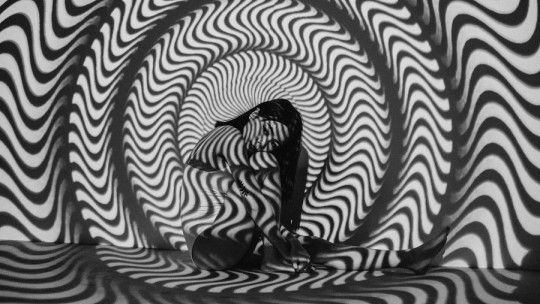
Hallucinations are abnormal perceptual experiences. They are often described as a sensation without a corresponding object: something that is seen, heard, smelled, tasted, touched, or felt within; but without there being a real stimulus that can explain it.
Although it is true that they have often been framed in a psychopathological context, and specifically in disorders such as psychoses, these are experiences that can occur in any healthy individual under certain conditions.
Most of the scientific literature on the issue focuses on the adult population, for which the presence of the phenomenon has been explored with greater emphasis, but it would not be fair to ignore other periods of life in which it can also appear.
Therefore, in this article we will try to answer a single question: Can boys and girls hear voices through hallucination? To do this we will resort to scientific evidence on the matter.
Can children hear voices through hallucination?
There is a popular idea that, for an unknown reason, young children are capable of perceiving some nuances of reality that escape the trained eye of the adult man. This belief is common in multiple cultures around the world, and it is very easy to find testimonies in which it is described. the apparent encounter of an infant with a being that only he seems to notice, in front of the astonished gaze of those who might be at the scene. There are even viral videos on the subject, which have become popular on the Internet.
The explanations that have been given for this phenomenon have been diverse. At first, hypotheses of a paranormal nature were used, through which a spiritual or transcendental vision of childhood was raised. Nowadays, and thanks to the development of scientific knowledge, we can provide greater empirical solidity to this specific fact, drawing up operational hypotheses that adjust to less obscure explanations that are closer to reality.
Before delving into the phenomenon of childhood auditory hallucination in greater detail, it is essential to convey calm about the matter. These experiences do not usually constitute an indication of mental pathology, and there are even authors who consider them an intrinsic milestone in the development of the central nervous system. In these lines we will address knowledge about the topic in light of scientific evidence.
Is it frequent?
Today we have fairly precise knowledge regarding the prevalence of auditory hallucinations in all age periods.
Studies that address the issue reveal that during childhood (from nine to twelve years old) 17% of children experience them, reducing this percentage to less than half (7.5%) in adolescents. In other studies, more even percentages are observed, so there seem to be slight discrepancies between authors.
There is a certain consensus in the scientific community that Childhood is a stage prone to these types of experiences, but it is in adulthood when its presence most clearly suggests a possible underlying mental alteration, despite the fact that the absolute prevalence rate in this age period is dramatically reduced. This fact supports the theoretical models that see hallucination as a regulatory element for the development of the central nervous system, despite the fact that we still do not understand the mechanisms involved.
The “physical” properties of these forms of perception are described in a different way There are children who say they hear very simple sounds, such as tapping or similar, but in certain cases they report more complex experiences (human voices that demand attention or conversations between two or more “invisible figures”). Sometimes they can generate emotions of fear, promoting the warmth of the bonding figures.
Hallucinations have been described among children up to five years old, and even younger, which is why the classificatory subtype of “early onset” has been coined.
Why happens?
Next we will address five of the most common causes of hallucinations in childhood according to the state of the art. Factors linked to the physiological, psychological and social will be included.
1. Imaginary friends
A very high percentage of children report having (or having had) imaginary friends at some point in their life, and the literature indicates that in these cases there is a greater tendency to report visual and auditory hallucinations. This phenomenon, which is not a cause for concern, pursues five purposes: regulating emotions and solving problems, exploring ideals, looking for someone to have fun with, enduring loneliness, and practicing behaviors or social roles.
Most parents consider that it is not a negative situation, so they do not usually worry too much or consult their pediatrician. In general, it is considered one of the contexts in which hallucination can present in a benign way. Along the same lines, there are even testimonies that claim that imaginary companions have supported the child during evolutionary transitions, such as the birth of a little sibling or the first contact with school or daycare (and the corresponding absence of attachment figures). .
Finally, Almost all children are able to recognize their imaginary friend as their own creation, which does not exist beyond your own head. This ability to “realize” is a good prognostic factor for childhood hallucinations in general, and not just for the innocuous assumption of imaginary friends.
2. Adverse life events and emotional distress
Emotional distress, cognitive distortions and traumatic events They constitute a triad that has been associated with the appearance of positive symptoms of psychosis (hallucinations and delusions), something that has also been replicated in the child and adolescent population.
This risk factor would be directly linked to the diathesis-stress hypothesis, and would be linked to genetic factors of some kind. The model suggests that only the vulnerability for psychosis is transmitted from parents to children, but not the disorder itself (through specific alterations in the migration of neurons during development).
Nevertheless, the experience of intense stress would act as a triggering element precipitating its definitive clinical expression (from genotype to phenotype).
Not all children who report hallucinations have suffered traumatic situations, nor do all those who have experienced this type of events end up experiencing them. What has been corroborated is that when this phenomenon occurs in a child without evidence of psychosis, as a result of the adversity they may be experiencing, the symptom tends to dilute in a directly proportional manner as the conflict situation is resolved. .
3. Sleep deprivation
Sleep deprivation has been linked to hallucinations in all age periods, from adulthood to childhood. There is evidence that The absence of sleep generates cognitive alterations (in memory, attention, etc.), changes in mood and distortions of perception All of this happens in healthy children, without a diagnosis of any psychological disorder, and also among adults. Situations such as extreme sensory isolation can also cause them, as well as intense fatigue and hyperthermia.
4. Metacognition: distinction between the mental and the real
Metacognition is the ability of humans to become aware of their internal processes, such as thoughts and emotions. It is a way of thinking about what you think, or even feeling about what you feel. This higher function is essential for discriminating what is created “inside” from what is perceived outside, and has been postulated as a key element in understanding why hallucinations occur.
Research on metacognition places all the functions that are integrated into it (mnesic, perceptual, etc.) in the prefrontal cortex, precisely the region of the brain that takes the longest to mature (well into the second decade of life). Perhaps this delay would explain the age gradient for the prevalence of hallucination (more common in early childhood and progressively rarer). Thus, as this circuit reached greater development, the subject would be better able to correctly differentiate between his thoughts and external stimuli, thus the hallucinations would be definitively diluted.
Other studies indicate that hallucinations in childhood are more common in children with difficulty in normative development of theory of mind (theory of mind), that is, the ability to know oneself as individuals separated from their environment and to attribute internal states other than their own to others. Despite being very interesting, both this theory and the one related to metacognition need more research in the future.
5. Neurophysiology
Neuroimaging studies with children who present auditory hallucinations point to a functional alteration in the Default Neural Network, which is responsible for the things we think and feel when the mind is in a resting state. Is about a set of structures that are activated when apparently “we are not doing anything” and which seem to have the purpose of preparing the central nervous system to activate spontaneously if necessary.
It has also been described that the primary/secondary auditory cortex, which responds to the perception of an objective sound stimulus, would be activated at the same moment in which children indicate hearing a hallucination.
In conclusion, and returning to the question with which we opened this text (can children hear voices through hallucination?), the answer would be yes. Despite this, there are still many questions to be answered regarding the causes and factors that determine the prognosis.
Complications
Hallucinations in childhood They are usually a benign and temporary phenomenon, which tends to complete resolution as time progresses. Even so, in some cases it is possible that complications may arise to take into account, as they could require a specific therapeutic approach.
It has been observed that the hallucinatory experience in childhood It can be associated with significant emotional distress and the appearance of other emotional problems of clinical relevance. In adolescence, a greater frequency of suicidal ideation has been described among those who report suffering from the symptom, after having controlled for concomitant health problems. Therefore, as long as the symptom persists and causes some suffering to the person, it will be necessary to seek professional help.








